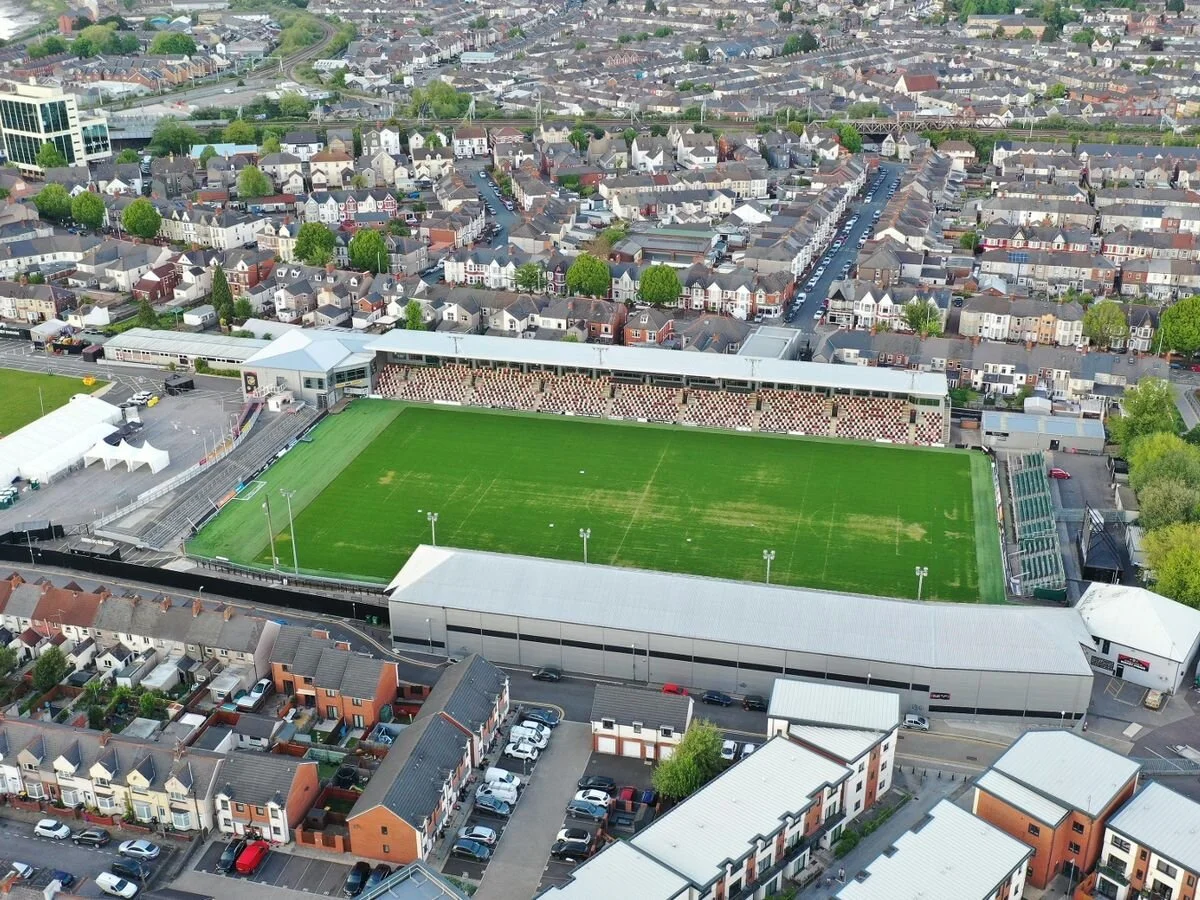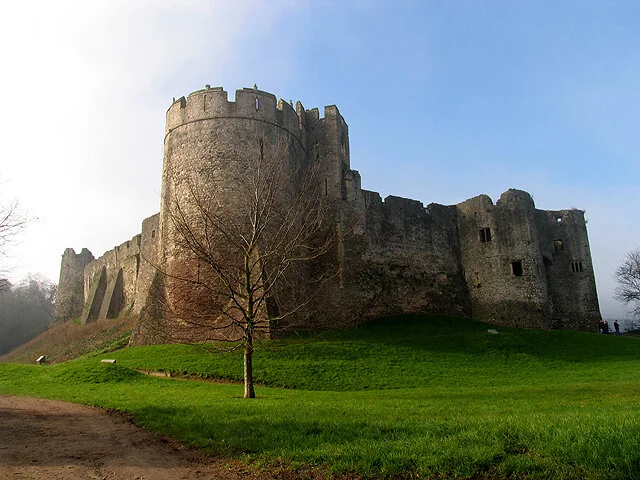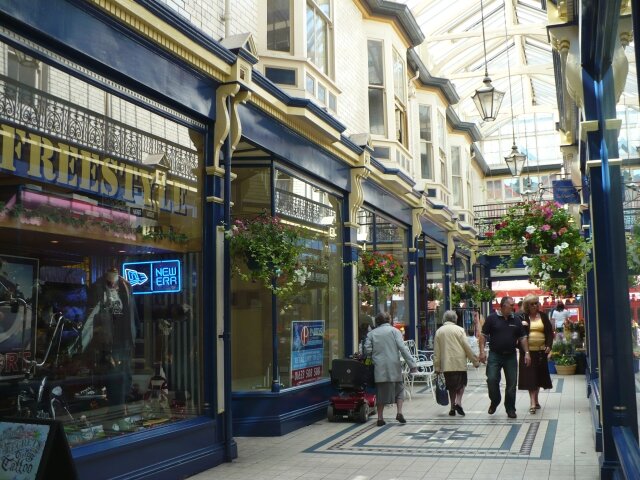
Newport
Rodney Parade. Home of Newport County
Riverfront
Chepstow Castle
Newport Arcade
Cathedral
Big Pit
CITY
Introduction:
Newport is a Welsh port and industrial city sitting at the mouth of the River Usk, where the river meets the Bristol Channel. The current population is 145,700.
Brief History:
Originally created by the Normans in 1093 the following century saw a castle built alongside the River Usk. A bridge was built over the river and in the 14th century a guild was formed. The Friars arrived and opened a hospital but the town was burned to the ground in 1402, which was easy as all the buildings were made of timber.
By the 1500’s the town had a small haven and traded with Bristol and Bridgewater. The industries at this time were leather tanning, soap making and starch making. There were also many tradesmen. Even though a Guildhall was built in the 16th century, Newport was still a small town.
The eighteenth and nineteenth saw the arrival of the industrial revolution and with coal and iron production, the population grew rapidly, from 1000 in 1801 to 67,000 in 1901. This, of course, brought a canal, railway, sewers, gas lights, police etc., all that a town needed.
The twentieth century saw many more new facilities and in the 1920’s slum clearance was started and new council housing built. Post WW2, although still a flourishing town the pattern of industry began to change. A steelworks was built but the coal and shipbuilding disappeared.
Newport then gradually became a hi- tech town. In 1949 St. Woolos Church became a cathedral and in 2002 the town became a city. The city centre is currently being refurbished for the benefit of its 145,700 inhabitants.
Things to Do:
Tredegar House:
This beautiful 17th century house is an architectural gem of Wales. The house belonged to the Morgan family, one of which became a hero in the Charge of the Light Brigade. As well as the fantastic interior there is a formal garden and ninety acres of parkland. The nearest station is Newport, two miles away, and buses 30 (Newport to Cardiff) and 36 (Celtic Springs to Newport Bus Station) are just a five minute walk away.
Travelling by road towards the house by the A48 or M4 (exit 28) look for the brown “Historic House” signs. Use sat nav NP10 8YW. There is a pay and display car park. There are dining facilities and a shop. Entrance is £8 for adults and £4 for children.
Newport Museum and Art Gallery:
This venue covers the history, culture and environment of Newport from pre historic times to the twentieth century. Located on Jack Frost Square the museum is open Tuesday to Saturday and has a shop. Further information can be obtained by emailing:- museum@newport.gov.uk .
Newport Cathedral:
St. Woolos Church ( a corruption of Gwynnllyw) was made a cathedral of the Church of Wales in 1949. With some Anglo Saxon remains the cathedral was improved by the Normans, added to in the middle ages and works continued to the 1960s. Located at the top of Stow Hill it offers excellent views over the city. The cathedral is open until 5.30pm Monday to Friday, 4pm Saturday and 8pm Sunday.
To visit by car enter satnav NP20 4EA. There is on street parking. Alternatively, there is bus 5A (circular route) from Newport Railway Station. There is also a gift shop.
Civic Centre:
The building is a Grade II listed Art Deco building located in Godfrey Road. The main point of interest is the clock tower which has a collection of 12 murals, by German artist Hans Feibusch, which depict the history of the city in Celtic times to the building of George Street Bridge over the River Usk.
Belle Vue Park:
Opened in 1894, this Victorian park has a rockery, bandstand, conservatories and a pavilion. It also contains some rare species, including Himalayan Magnolias and Tulip tree and in autumn is a riot of colour. The park which is open until dusk has a café which provides hot and cold food and drinks.
The park can be approached from Cardiff Road, Belle Vue Lane and Waterloo Lane. There is a free car park at the entrance. There is a bus stop, route 30, at Cardiff Road entrance.
Caerleon:
This village lying to the north of Newport contains magnificent Roman remains in the form of a fortress, (Isca Augusta), baths and amphi theatre. Open until 5pm Monday to Saturday and until 5pm on Sundays, entrance is free. There is also a shop.
Lying in the Vale of the Usk, the village is interesting in its own right, with much further history and interesting buildings, together with pubs and cafes etc..
Lying on the Newport to Cwmbran road it is served by buses 27, 28, 28b, 29 and 29b.
Big Pit:
A 33 minute drive away, using the A4043 and A4042 is the Big Pit which is a real coal pit and is the National Coal Museum. There is much of interest including Mining Galleries, Pithead Baths, Historic Colliery Buildings and an Underground Tour.
The underground tour starts with being kitted out in typical mining safety equipment and after descending 90 metres below ground a miner takes you on a tour. The tour takes 50 minutes and you are shown the coal faces, engine rooms, stables and tram way.
This UNESCO World Heritage Site has a café for refreshments. Open until 5pm daily, the underground tours are open 10am to 3.30pm.
The museum is located in the town of Blaenavon which also has the historical ironworks. As well as industrial relics to see there is a social content in the form of worker’s cottages being restored to the way they were in the works heyday.
For full travel information check out www.traveline-cymru.info .
Chepstow Castle:
Located in Chepstow on top of cliffs overlooking the River Wye, the castle is the oldest surviving post-Roman fortification in Britain. The castle is open to the public and visitors can walk along the battlements and enter Marten Tower. Bus route 74 connects Newport with Chepstow and Arriva trains operate between the two towns.
Night Life:
Although nowhere near the largest city in the land, a fair range of night clubs exist. These are concentrated in Market Street, Stow Hill and Griffin Street areas. Alongside are a good selection of bars and pubs.
For more cultural offerings there are Riverfront Theatre and Arts Centre, The Dolman Theatre and Newport Centre. For What’s On check out Newport City Council web site www.newport.gov.uk .
For ten pin bowling the Megabowl is open until 11.30pm all week. This can be found at Newport retail Park, adjacent to the Southern Distribution Road in the south east of the city.
Ice Skating is provided, along with many other facilities, at the Celtic Manor Resort, at NP18 1HQ. This venue hosts major golf tournaments, swimming, fishing etc. Buses 19a, 26 and 74 serve this venue.
There are a couple of gay venues in the city but for a bigger choice Cardiff is only a few miles away.
Eating Out:
The city centre and surrounding villages possess a good range of eating establishments. As well as national foods, restaurants and pubs provide cuisines from many places, including Spain, Italy, China, Far East and Indian Sub Continent.
Newport Retail Park contains a range of popular fast food outlets.
The city centre and malls contain a mixture of cafes and take aways.
Shopping:
A reasonable shopping choice can be found in the city. There is an independent department store and other major national chains in Commercial Street and a new mall called Friars Walk has a national department store and many more known shops. Other places to visit are the Victorian Arcade, Kings Way Shopping Centre and various retail parks. Local owned shops and boutiques mix amongst the big names..
Accommodation:
A good night’s sleep can be found in establishments from 5 star, through to international and national chains and budget hotels, down to guest houses and pubs, in Newport and surrounding area.
Transport:
Buses:
Forty six, Newport Bus, bus routes serve the city centre, suburbs and nearby towns, including Cardiff, Chepstow, Cwmbran and Monmouth. Stagecoach also provides services that cover the local area. Most of these buses terminate at the bus or railway stations.
Road:
The M4, which passes just behind Newport city centre, connects Swansea and London via Swindon and Reading. To the north east the A48 connects Chepstow and the A40 to Gloucester, Cheltenham and Oxford.
Northwards the A449 leads to Monmouth and the A4042/A465 takes you to Cwmbran, Abergavenny and Hereford.
Railway:
First Great Western run through Newport on the London Paddington to Swansea route. Westward, connections at Cardiff and Swansea allow you to cover the Welsh rail system. Eastward, connections at Bristol, Reading and London give access to routes throughout England and Wales.
North from the city Arriva trains serve Cheltenham, Hereford, Shrewsbury, Chester and Manchester. Full details from www.nationalrail.co.uk .
Air:
The nearest airport is Cardiff which can be connected to Newport by either bus or taxi. Bristol airport is readily reached by using National Express or Greyhound bus.
Taxis:
Four firms run taxi services in Newport.
CLUB
NEWPORT COUNTY
Stadium: Rodney Parade. Newport. NP19 0UU
Founded: 1912
Joined League: 1920
Chairman: Gavin Foxall
Manager: James Rowberry
Current League: League 2
Phone Number: 01633 670690
Email: office@newport-county.co.uk
Brief History:
Starting life as Newport and Monmouth County AFC in 1912, the club played in the Southern League and home was Somerton Park. The club then changed the name to just Newport County and joined the Football League in 1920 as inaugural members of the Third Division.
Unusually the club were not re-elected to the League after the 1930/31 season but returned for the season of 1932/33. Then, after nearly twenty years of League football, County won the Division 3 Championship and was promoted to the second tier. Unfortunately the Second World War stopped the momentum the club had and after WW2 were relegated back to the third level. The relegation season saw a Football League record defeat of 0-13 v Newcastle United. In 1949 a best ever 5th round of the FA Cup was realised and then they were defeated by Portsmouth, who reached the semi finals and won the League Championship in that season.
By a margin of just four points the club retained their third level status in 1959 when Divisions 3 North and South were reorganized as Divisions 3 & 4. However, this was a temporary stay of execution as, in 1962, relegation to the basement tier finally beckoned. They stayed in this Division for the next eighteen years. In 1970/71 season an unwanted record was gained in the form of no wins in their first twenty five matches, followed by yet another unwanted record when they were beaten 1-6 by Barnet. This was the biggest defeat to a non-League club by a League club in the FA Cup.
In 1980 County got promoted back to Division 3 and this season also saw a Welsh Cup win which led to European football. This successful team contained a young John Aldridge, who went on to become a Liverpool legend. The campaign in the European Cup Winners Cup of 1980/81 saw progress against Crusaders’ of Northern Ireland and SK Haugar of Norway before being knocked out by Carl Zeiss Jena FC of East Germany.
Although nearly gaining promotion to the Second Division in 1983 the club was relegated to the basement division in 1987 and finished bottom of the whole league in 1988. This meant relegation to the Conference and in 1989 they went bust with debts of £330,000. This led them to drop to four leagues below the Football League, the Hellenic. A complete reorganization and a few stints of ground sharing saw the club climbing the leagues again. The Conference South was achieved by 2004, followed by Conference Premier in 2011. Then in 2013 two Welsh teams, Newport County and Wrexham, played against each other for the first time at Wembley, in the Conference Play Off Final. This was won by County and they currently play in League Two.
Match Day:
Tickets
Away supporters should contact their own club regarding tickets, although pay on the day at the ground is an option.
Home fans can purchase online via the club web site or by pay on the day at the ground.
Transport:
Bus:
Rodney Parade is within walking distance of Newport Bus Station.
Rail:
The football ground is walkable from Newport Railway Station.
Car:
If arriving by car it is suggested that you park in city centre car parks and walk to the ground. If you drive to the stadium then be aware of local parking restrictions. There are no official club car parks for supporters.
Air:
Cardiff and Bristol Airports could be used and connection should be by bus, coach or taxi as described above.
Stadium:
The club has used Rodney Parade only since 2012, although it dates from 1875. They share the ground with Newport RFC (the owners) and Newport Gwent Dragons, both rugby union clubs.
The stands are Bisley, which is all seater and single tiered. This includes executive boxes at the rear and a TV gantry. This stand opened in 2011. The North (or Town End) is a small open terrace which was opened in 2010. The South side has a small, temporary, seating stand which runs for only half the width of the pitch. Also on this end is a building which houses the changing rooms and the team emerge from the corner of the pitch. The final stand is the Hazell which is a covered stand with seating at the rear and terracing in the front.
Away supporters are located in the Bisley stand and the facilities which are good, include a bar and television. There is a food outlet which serves hot dogs, pies, sausage rolls and chips.
Access to this stand is via Corporation Road which is a path running between residential housing. Just outside the stand is a portakabin which sells away tickets on the day.
The stadium also contains a club shop.
If refreshment is sought before or after the match then Chepstow Road has away friendly pubs and a number of fast food outlets. The town centre, a ten to fifteen minute walk, has numerous further food and drink facilities.






